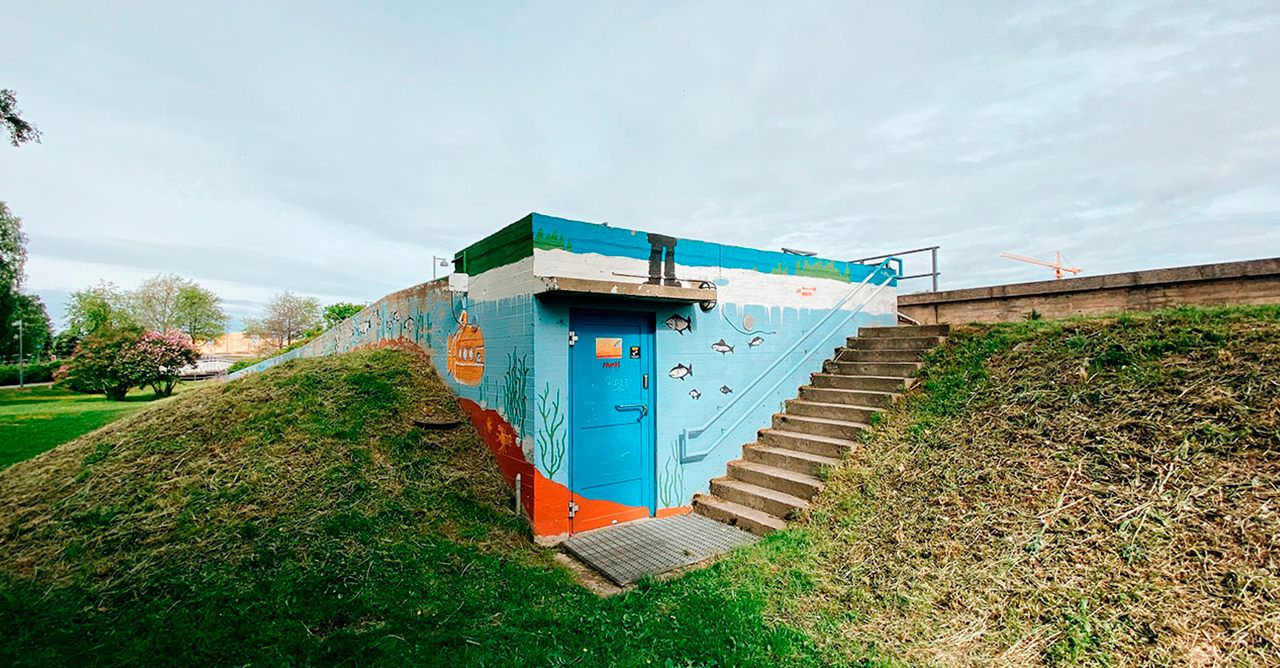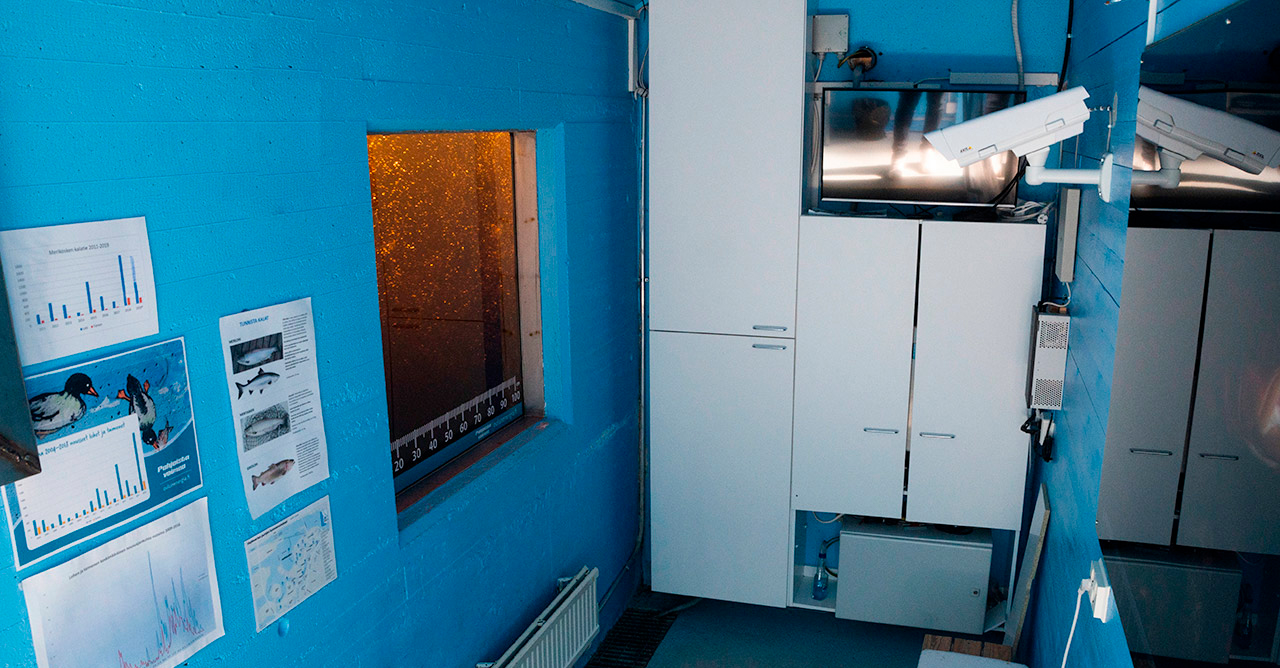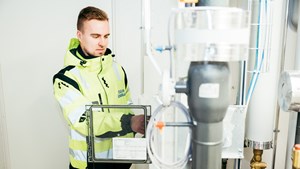What, where, why – five questions about the fish of the fish pass
During the spring and summer, salmon, trout, and other migratory fish from the sea have risen abundantly along the Merikoski fish pass. It has been possible to track rising fish in real time by webcam. With regard to the fish pass and the fish that move along it, there are a few things that we have been asked throughout the summer, so here are the answers to the most common questions about the fish pass.

Author
Name: Tarja Väyrynen
Title: Quality and Environmental Director
Tarja Väyrynen has a front-row seat for monitoring the rapid development of the energy sector. She has worked on environmental issues for a long time and is currently responsible for the management of environmental permits, responsibility issues, and peat resources. In her spare time, she likes to spot birds and plants, taking in the wonderful diversity of nature.
1. Why is the webcam image so low-quality?
Fish swimming along the fish pass are recorded by a camera in the fish observation room. The camera is located about two metres from the glass, through which the camera captures the rising fish. The water of the Oulujoki typically contains humus that causes yellowing, which weakens the view of the fish. A new high-speed fibre connection was recently installed into the observation room, which has significantly improved the image quality.
The camera in the observation room captures the fish through the window.
2. How does the fish pass counter work when, according to statistics, only a few fish have risen along the fish pass on a given day, but the camera shows a large shoal of fish hanging out? So does the counter count the fish before or after the camera?
The fish pass counter is not visible to anyone watching the webcam. Before entering the river, the fish swim through a so-called scanning tunnel, where they are videotaped. Once a week, the quantities of fish that have risen daily during the previous week are calculated based on the video, and the information is published on our website. The video can be used to identify quantities, species, sizes and, for salmonids, gender. Fish can spend relatively long periods in the space displayed on the webcam before they decide to move from the fish pass to Oulujoki.
3. Why are the same fish spinning around in front of the camera for minutes on end, is the hatch open? Can I see for myself if the fish pass hatch is open?
Fish are not prevented from entering the river by any means, but have free access upriver if they so wish. Why not all fish progress quickly from the fish observation area to Oulujoki is a mystery to us. When you follow the fish for a long time, you can see that they are all slightly different in appearance. In this case, it is also possible to observe how much time each fish spends in the area before entering the river. Even if it looks like a fish is stuck, at some point, each one has decided to swim into the river.

The outer walls of the observation room are decorated with paintings by the students of the Myllytulli school.
4. Why is the fish observation area not open to the public? I'd love to see the fish live.
The fish observation area, or the so-called aquarium, has been open to the public annually for a separately announced period. In previous years, the area has been open for about a week in August–September during the prime rising time for salmonids. If there has been an exceptionally high number of fish at any point in time, we have tried to open the observation area of the fish pass to the public immediately, and we have announced the opening on the website and on social media. Last year and this year, the coronavirus situation has not made it possible to keep the observation area open safely.
5. Why are there injured fish on the webcam?
Fish face a number of life-threatening situations in their lifetimes, which can result in injury to the fish or, in the worst case, even death. Rising fish may have skin tears on their sides, and both the muzzle and tail may be damaged. Fish can be injured by predators, such as seals, in the course of fishing, or they can bump into things when they move around in various places. Fish are affected by a variety of viral, bacterial, and parasitic diseases, which can cause visible changes in the appearance of fish. Finding out the cause of the injury would require catching and examining the fish.




